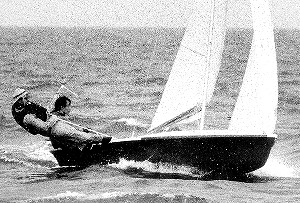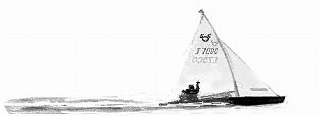|
|
||
| Japanese |
|
|
||
| Japanese |
|
GH Craft started in 1970 when Gaku and Hikaru (acronym GH comes from initial
letters) began to prepare for incorporation while both were still at the
university. When we started, our main work was to design and create racing
yachts and small ships that sailed faster than wind. At that time, yachts
used light-weight wood frames, and through the 60’s and 70’s FRP (fiber
reinforced plastics) were rapidly gaining its popularity. |
 |
|
 |
||
Our founding period was repetition of creating light but strong yacht structure with our own hands and brains, and then participating in yacht competition to see the superiority of our products. Soon we entered into the age of glass fiber that has relatively low elasticity. Compared to wood-made yachts, physical strength is low and waves deformed the bottom of the yachts. Therefore, despite its superiority in lightness and durability, it was difficult to win the race in competition. FRP was composed of glass fiber and heat hardening (non-saturating polyester) resin leading to lighter and stronger composite such as sandwich structure resulting in further advancement of materials and mold processing technology. |
||
1970’s was the time when the carbon fiber market started as the most strongest yet light-weight industrial material. In our competition world, we adapted this cutting edge material right away. In advanced aerospace industry honey comb structure using carbon fiber was just starting while in Japan fishing rods, tennis rackets, and golf clubs started to use carbon technology. Fortunately, GH Craft adapted the cutting-edge technology earlier than Japanese commercial and defense industries through yacht competition world. Becoming a Japanese board member of SAMPE (Society for the Advancement of Material and Process Engineering, headquartered in US) enhanced our knowledge and understanding of the technology. |
||
 |
In 1980’s Japan, motor sports was reaching the peak and racing cars started to use carbon fiber materials. This was the period that we started to use CAE, CAD, and CAM as well as autoclave technologies. We reorganized our corporate structure to be able to run the complete capability of designing models, tooling, jig forming, molding, assembling, and evaluating. |
|
| In 1990’s, Japanese motor sports industry quickly started to decline correlated
with the bubble economy burst. During the bubble period through each
motor sports seasons, GH Craft experienced the demanding development cycles
with severe design requirement in a short production time. We learned from
these experiences the standard design and development of the automobile
industry. We came up with the solution of significantly reducing development
period at the front line of world class motor sports, and then shifting
gears for new aerospace world. |
||
| Our new challenge in aerospace industry
coincided with the rapidly growing cost sensitivity in the industry. They
started to listen to new ideas in order to lower the cost instead of high
quality with high cost standard that they used to have. GH Craft succeeded to bring in new ideas based on our yacht and racing car experiences. We created tooling and jig molding in a short period, and produced satellite structure, test vehicle structure, and load equipments. |
||
 |
In 1998, Nippon Challenge returned to
America’s Cup. In the past, Yamaha structured the yacht, but this time
Professor Miyata of Tokyo University (http://triton.naoe.t.u-tokyo.ac.jp/home-j.html)
leaded the technical team for developing specification of the yacht shape using
hydro- and aero-dynamics while GH Craft directed the building team by designing
structure and constructing the hull and mast. |